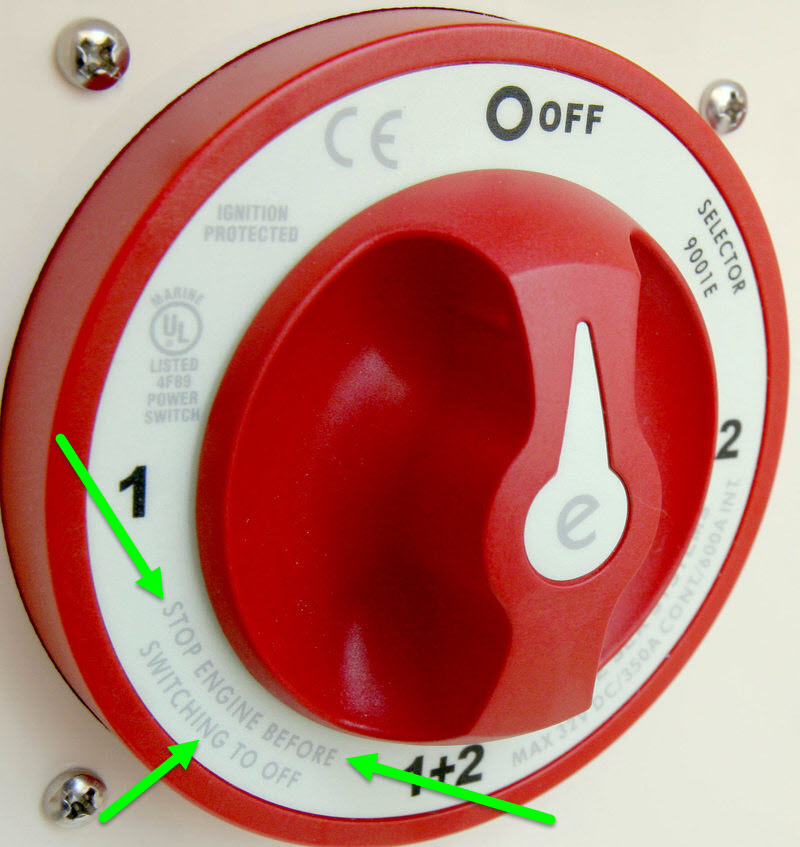Hello
@Udi ,
I'm by no means the electrical guru but I do advocate the DCP switch with qualifications. The simple answer is that under all conditions mentioned, you turn your switch On or Off ... that's it. There should not be any reason to use the "Combine" position under normal use. The switch even colors the position yellow with an exclamation point to fortify that understanding.
But there are too many open questions before any more specific information can be discussed. First, define your batteries. What do you have for a house bank? I assume you have a separate start battery, if so, what do you have? How do you charge your batteries? The DCP switch typically is installed with the Blue Sea Automatic Charging Relay (ACR) ... should we assume that you have one? Did you follow all of the wiring instructions for it? Where is your alternator current directed? It seems to me that your question revolves around the charging mechanisms. It will be helpful if you define your charging sources and how they are wired. Wiring diagrams are the best mode of description.
You have a 45' boat, probably with some sophisticated electrics that many don't have. Your panel describes front and rear electric winches, one with a thermal circuit breaker and another with a high-amp buss. Then you also have a high amp buss for a circuit labeled "Anchor". I assume that is a windlass? What batteries power these loads? I have no idea what the differences are between normal circuit breakers, thermal circuit breakers and high-amp busses with these applications. So I would need explanation to understand how they might be affected by the DCP switch.
The one thing you should do since you have a DCP switch is install 2 isolation switches between the batteries and the DCP switch. One isolation switch should be positioned between the House Batt bank and the House post on the DCP. The other isolation switch should be between the Start Batt and the Start post on the DCP. The isolation switches are simple On-Off switches (use Blue Sea just to be consistent). Both should always be "ON", even when you leave the boat. It is best to put them in a compartment out of view so nobody inadvertently turns one or both OFF. The only purpose of these switches is to isolate a battery bank that has a catastrophic failure (such as a short, or it's dead beyond redemption). With a dead battery (bank) in isolation (by turning the appropriate isolation switch OFF), only then do you use the "Combine" position on the DCP to provide juice to both the Start battery and the House Bank simultaneously using a single source live battery or battery bank.
The advantage of the DCP switch is that the Start and House banks are isolated and "ON" simultaneously under all normal circumstances. However, isolation of a failed battery and simultaneous use of House and Start loads is only possible by adding 2 On-Off isolation switches. But, by doing that, you get the best of both functions. You can do the same thing with (2) 1+2+B switches, btw. It's all in the wiring sequence.
Hope that helps!





